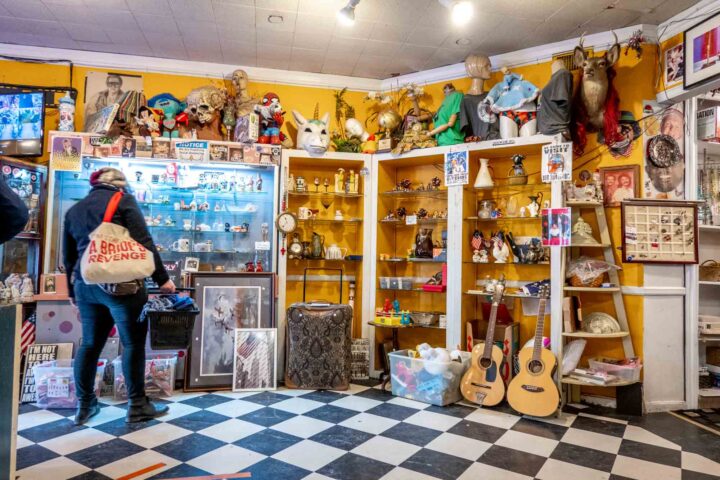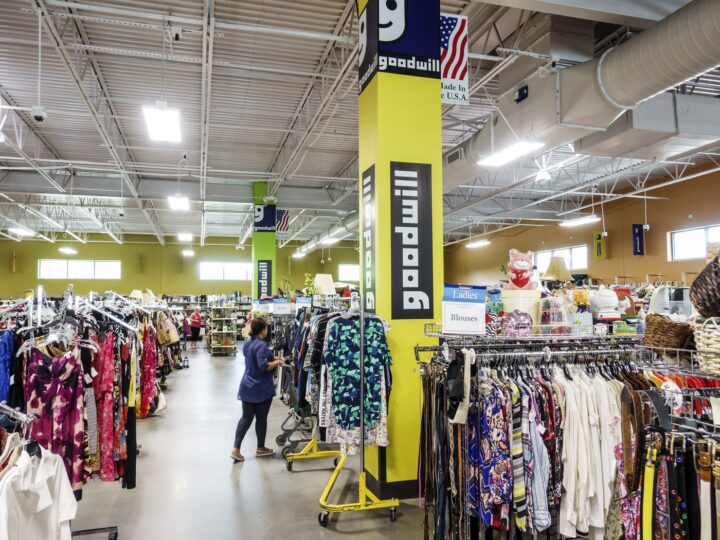Thrift stores have gained immense popularity in recent times as more and more people are looking for sustainable and affordable shopping options. The thrift store industry is booming and provides a great opportunity for entrepreneurs to start their businesses.
However, to ensure the success of any business, it is crucial to have a well-planned business strategy. In this article, we will discuss how to develop a comprehensive thrift store business plan from ideation to execution. So, keep reading it!
8 Key Steps For Creating A Thrift Store Business Plan

Below are some key steps you should practice while creating a business plan for your thrift store.
1. Identify Your Niche And Target Audience
The first step in developing a comprehensive thrift store business plan is to identify your niche and target audience. Thrift stores can cater to a diverse range of customers, from budget-conscious shoppers to vintage enthusiasts. It is essential to identify the niche you want to target and tailor your business plan accordingly.
Research the demographics of the area where you plan to open your thrift store. Determine the average income level, age group, and interests of potential customers. This will help you understand the type of products you need to stock, the pricing strategy you need to adopt, and the marketing channels you need to use to attract customers.
2. Conduct A SWOT Analysis
Once you have identified your niche and target audience, the next step is to conduct a SWOT analysis. This analysis helps you evaluate the strengths, weaknesses, opportunities, and threats of your business.
- Strengths ─ What are the unique selling points of your thrift store? What sets you apart from the competition? This could be the quality of products, pricing strategy, customer service, etc.
- Weaknesses ─ What are the areas of your business that need improvement? Are there insufficient funds or resources? Is the location of your thrift store a disadvantage?
- Opportunities ─ What opportunities are available in the market that your thrift store can capitalize on? This could be an untapped customer base, a new location, or a partnership with a local organization.
- Threats ─ What external factors could affect the success of your thrift store? This could be competition from other thrift stores, changes in consumer behavior, or economic instability.
3. Develop A Marketing Plan

Marketing is crucial for the success of any business, and thrift stores are no exception. Develop a marketing plan that will help you attract customers and build a loyal customer base. Consider the following strategies:
- Social media marketing ─ Use social media platforms like Facebook, Instagram, and Twitter to showcase your products, share customer reviews, and run promotional campaigns.
- In-store events ─ Organize in-store events like DIY workshops, fashion shows, or charity fundraisers to attract potential customers and build a sense of community.
- Partnerships ─ Partner with local organizations or influencers to promote your thrift store and attract a wider audience.
4. Create A Financial Plan
A financial plan is essential to ensure the sustainability and profitability of your thrift store. It should include a comprehensive budget, projected revenue and expenses, and a cash flow statement.
- Budget ─ Estimate the costs associated with opening and running your thrift store, including rent, utilities, inventory, staffing, and marketing expenses.
- Revenue and expenses ─ Project your expected revenue and expenses for the first year of operation. This should include sales revenue, cost of goods sold, and operating expenses like rent, utilities, and staffing.
- Cash flow statement ─ Develop a cash flow statement that shows the inflow and outflow of cash for your business. This will help you identify potential cash flow issues and make necessary adjustments.
5. Determine Your Pricing Strategy
Pricing is a critical factor in the success of any thrift store. Determine a pricing strategy that is competitive, profitable, and appeals to your target audience. Consider the following factors:
- Cost of goods ─ Calculate the cost of goods sold and ensure that your pricing strategy allows for a reasonable profit margin.
- Competitor pricing ─ Research the pricing of your competitors and ensure that your pricing is competitive.
- Overhead costs ─ This includes rent, utilities, salaries, and other expenses associated with running your thrift store.
- Target market ─ Your pricing strategy should be based on the price sensitivity of your target market.
6. Test And Refine Your Pricing Strategy

When developing a thrift store business plan, one of the key areas to focus on is pricing. To be profitable, you need to strike the right balance between attracting customers with affordable prices while also generating enough revenue to cover your costs and make a profit. Here are some steps to help you test and refine your pricing strategy:
- Determine your profit margins ─ Calculate your costs (such as rent, utilities, employee wages, etc.) and factor in the amount of profit you want to make per item. This will help you determine the minimum price you need to charge to stay in business.
- Test different pricing levels ─ Try out different pricing strategies to see what works best for your store. For example, you might try discounting certain items to attract customers or offering special deals on certain days of the week.
7. Determine Your Inventory:
The inventory you carry in your thrift store can make or break your business. You need to have a good mix of items that will appeal to a wide range of customers while also being able to turn over your inventory quickly. Here are some steps to help you determine your inventory:
- Source your inventory ─ There are many ways to source inventory for a thrift store, including buying from wholesalers, accepting donations from the public, and purchasing items from estate sales or auctions.
- Establish quality standards ─ Set clear guidelines for the condition and quality of items you will accept. This will help ensure that your inventory is of consistent quality and will appeal to your target market.
8. Review And Revise Your Business Plan

A thrift store business plan is not set in stone. As your business grows and evolves, you may need to make changes to your plan to ensure that you stay on track. Here are some steps to help you review and revise your business plan:
Regularly review your financials ─ Monitor your sales, expenses, and profits regularly to ensure that you are meeting your goals and making adjustments as needed.
Update your marketing strategy ─ As you review your business plan, consider whether your marketing strategy is still effective or if it needs to be adjusted. This could include updating your social media channels, improving your website, or exploring new advertising opportunities.
Conclusion
Developing a comprehensive thrift store business plan is essential for success. By following the steps outlined above, you can create a plan that outlines your goals, target market, financial projections, and marketing strategy.
Remember to regularly review and revise your plan to ensure that it remains relevant and aligned with your business goals. With a well-crafted business plan, you can navigate the challenges of the thrift store industry and build a successful and sustainable business.




